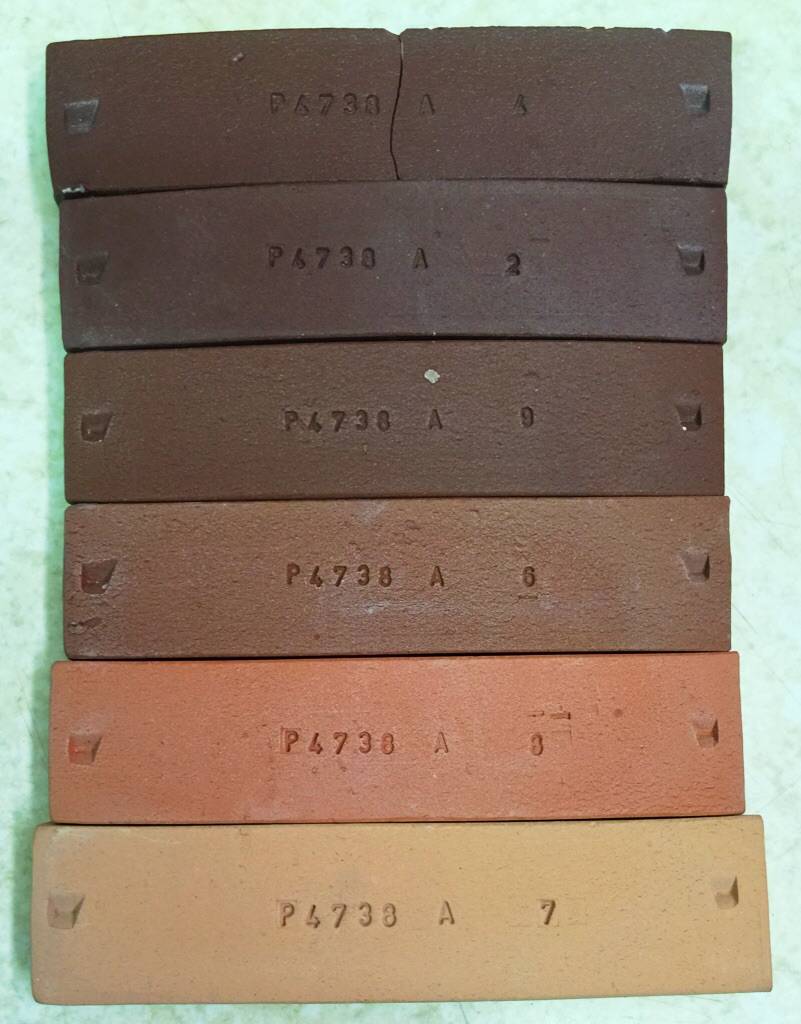A terra cotta clay fired from cone 06 (bottom) to 4
Terra cotta clays insight-live.com/glossary/60">mature rapidly over a narrow range of temperatures, showing dramatic changes in fired color, density and strength. These Plainsman BGP SHAB test bars are fired (bottom to top) at cone 06, 04, 03, 02, 2 and 4. At cone 06 (1830F/1000C) it is porous and shrinks very little. But as it approaches and passes cone 03 (1950F/1070C) the color deepens and then moves toward brown at cone 02 (where it reaches maximum density and strength). However, past cone 02 it becomes unstable, beginning to melt (as indicated by negative shrinkage). The second bar up, cone 04, is a good compromise: Adequate strength, good color and low shrinkage. This “single suitable temperature” is completely different than white burning low fire bodies, they are refractory.
Pages that reference this post in the Digitalfire Reference Library:
Why this transparently-glazed terra cotta is better at cone 03 than 04, Vitreous fired ceramic that stays floating!, The strange vitrification profile of a talc body, Maturity, Cone 1, Vitreous, Firing Shrinkage

This post is one of thousands found in the Digitalfire Reference Database. Most are part of a timeline maintained by Tony Hansen. You can search that timeline on the home page of digitalfire.com.
